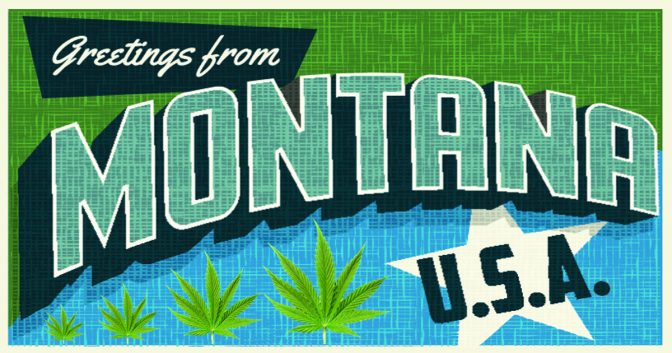Medical Marijuana in Montana: Legend of the Fall

The failure of the Montana medical marijuana program is a cautionary tale.
In 2004, Montana became the ninth state to legalize medical marijuana. But what had become a vibrant program is now struggling to survive.
Like California’s Prop 215, Montana’s Initiative 148 does not allow for commercial dispensaries. However, by 2008, enterprising caregivers and providers began to open up storefronts. Under I-148, caregivers could “provide marijuana only to qualifying patients,” meaning more than one, and “receive reasonable compensation for services.”
With safe access and easy registration came an explosion in the patient registry, from 1,600 in 2008 to almost 7,500 in 2009. By 2011, the registry topped out at over 30,000 patients.
The proliferation of dispensaries and patients alarmed the legislature and led to the passage of SB 423, which amended I-148. When the Montana Cannabis Industry Association filed a suit to stop med-pot shops from opening, the state’s 1st District Court Judge James Reynolds put a hold on implementation of the bill.
Federal raids on Montana dispensaries in 2011—named Operation Smoke-jumper, Operation Weed Be Gone and Operation Noxious Weed—netted 34 indictments leading to 33 convictions. By the end of the year, the registry had dropped 40% to 18,000 patients.
In 2012, Governor Steve Bullock, then Montana’s attorney general, appealed Judge Reynolds’ decision. The Montana Supreme Court sided with the AG, and ordered Judge Reynolds to reevaluate the case. Activists successfully placed a veto referendum, R-124, on the ballot to overturn SB 423. But, one had to vote against IR-124 to repeal SB 423, and the veto initiative lost, with 43% of the vote. By the end of the year, the registry had shrunk to just over 8,000 patients.
Through 2013, the registry continued to hover at around 8,000 names as the courts continued to battle over SB 423. Registered providers, which had reached around 4,900 at the 2011 peak, were now down to just over 300. By the end of 2014, Judge Reynolds reaffirmed his earlier 2011 decision enjoining major provisions of SB 423 from taking effect.
But this February, the Montana Supreme Court upheld most of SB 423, overruling Judge Reynolds. By September, the remaining 475 providers will have to pare down to just three patients each. At most, they’ll be able to provide for 1,425 of the current 13,500 registered patients.
The next hope for Montana’s patients and medical marijuana industry is Initiative 182, which would restore the medical marijuana program in Montana and explicitly allow for dispensaries. On the other side, Initiative 176 would repeal the medical marijuana program altogether. An initiative and a constitutional amendment (CI-115) are also gathering signatures to legalize adult-use marijuana in the state.
If you enjoyed this Freedom Leaf article, consider subscribing today!

